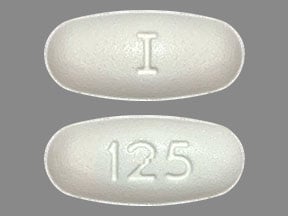
Metronidazole Coupons & Savings Card – Discount Prices from $4.32
Generic for: Flagyl, Metrocream, Noritate
My prescription
Edit
500MG, Metronidazole (14 Tablets)
Select pharmacy

CVS
$18.57
COUPON PRICE
Walmart
$4.32
COUPON PRICE
Albertsons
$8.98
COUPON PRICE
Walgreens
$10.50
COUPON PRICEFree Metronidazole Savings Card

Walmart
$4.32
Show this coupon to your pharmacist
ID
LH6B9B8151
PCN
CHIPPO
BIN
019876
GRP
LHX
This coupon is not insurance
More prescriptions for skin infection
More prescriptions for skin infection
Price history for Likmez (brand) & Metronidazole (generic)
14 Tablets, 500MG
Average retail price for Likmez
Average retail price for Metronidazole
Average SaveHealth price for Metronidazole
Our price history data is based on aggregated prescription data collected from participating pharmacies in America. Our prescription data updates daily to reflect the latest price changes. If you notice a missing data point, it means there wasn't sufficient data available to generate a monetary value for that date.
We analyzed Metronidazole prices for (500MG, 14 Tablets) over the last 12 months. The average retail price was $20.25, while the average price using the SaveHealth discount card was $6.37. That's a savings of approximately 68.54% when using our Metronidazole coupon.
Compared to the generic version, Likmez had an average price of $668.92 over the same time period. With the SaveHealth savings card, Metronidazole is 99.05% cheaper on average than Likmez.
*Retail prices are based on pharmacy claims data, and may not be accurate when we don't have enough claims.
Metronidazole dosage forms
Dosage Quantity Price from Per unit 125MG 10 Tablets $165.60 $16.56 125MG 56 Tablets $932.54 $16.65 125MG 500 Tablets $8183.50 $16.37 250MG 14 Tablets $4.17 $0.30 250MG 21 Tablets $5.01 $0.24 250MG 30 Tablets $6.09 $0.20 250MG 56 Tablets $9.20 $0.16 250MG 60 Tablets $9.67 $0.16 500MG 14 Tablets $4.32 $0.31 500MG 4 Tablets $3.02 $0.76
| Dosage | Quantity | Price from | Per unit |
|---|---|---|---|
| 125MG | 10 Tablets | $165.60 | $16.56 |
| 125MG | 56 Tablets | $932.54 | $16.65 |
| 125MG | 500 Tablets | $8183.50 | $16.37 |
| 250MG | 14 Tablets | $4.17 | $0.30 |
| 250MG | 21 Tablets | $5.01 | $0.24 |
| 250MG | 30 Tablets | $6.09 | $0.20 |
| 250MG | 56 Tablets | $9.20 | $0.16 |
| 250MG | 60 Tablets | $9.67 | $0.16 |
| 500MG | 14 Tablets | $4.32 | $0.31 |
| 500MG | 4 Tablets | $3.02 | $0.76 |
| 500MG | 20 Tablets | $5.10 | $0.26 |
| 500MG | 21 Tablets | $5.23 | $0.25 |
| 500MG | 30 Tablets | $6.41 | $0.21 |
Metronidazole Warnings
The safety information below outlines critical warnings and precautions associated with the use of metronidazole (Flagyl). It is essential to consider these details carefully and consult with a healthcare professional regarding any concerns.
Potential Cancer Risk: Long-term use of metronidazole (Flagyl) has been linked to an increased risk of tumors in animal studies. Do not exceed the dosage recommended by your healthcare provider.
Severe Allergic Reactions: This medication may cause serious skin reactions, including Stevens-Johnson syndrome (SJS). Seek immediate medical attention if you develop a rash, skin blisters, peeling, mouth sores, or high fever.
Neurological Issues: Rare brain and nerve complications, such as seizures or encephalopathy, have been reported. Contact your healthcare provider if you experience symptoms like seizures, speech difficulties, headaches, or nausea.
Liver and Kidney Concerns: Individuals with liver or kidney issues may experience higher levels of metronidazole in their blood, increasing side effect risks. Report any signs of liver or kidney problems, such as jaundice or changes in urination, to your healthcare team.
Fungal Infections: There is an increased risk of fungal infections, including vaginal yeast infections, while on this medication. Inform your provider if symptoms persist or worsen.
Antibiotic Resistance: Misuse of metronidazole can lead to drug-resistant infections. Adhere strictly to the prescribed dosage and duration.
White Blood Cell Count Reduction: Although rare, metronidazole could lower white blood cell counts, heightening infection risk. Regular blood tests may be necessary to monitor your condition.
Drug Interactions: Metronidazole can affect the clearance of other drugs, such as causing adverse reactions with disulfiram. Avoid combining these medications.
For specific contraindications, metronidazole should not be used under the following conditions:
- During the first trimester of pregnancy for treating trichomoniasis.
- Within two weeks of taking disulfiram.
- Concurrently with alcohol consumption.
- If you have Cockayne syndrome, due to potential liver complications.
In case of an overdose or an adverse reaction, seek emergency medical attention immediately. Always consult with your healthcare provider before starting or discontinuing any medication.
Metronidazole Side Effects
Common side effects:
- dizziness
- headache
- stomach upset
- nausea
- vomiting
- loss of appetite
- diarrhea
- constipation
- metallic taste in the mouth
Less common but important to monitor:
- flu-like symptoms
- inflammation of the vagina
- itchy groin
- upper respiratory infections
- sinus infections
- stuffy nose
- sore throat
- dry mouth
- urinary tract infections
- change in urine color to a darker hue
- oral thrush or yeast infections
- white patches in the mouth
- changes in vaginal discharge
Serious side effects:
- easy bruising or bleeding
- severe stomach or abdominal pain
- painful urination
- seizures
- unsteadiness
- mental changes like confusion
- trouble speaking
- numbness or tingling in limbs
- severe headache
- eye pain or sudden vision changes
- severe allergic reactions
- persistent fever
- swollen lymph nodes
- rash
- itching
- severe dizziness
- trouble breathing
- symptoms suggestive of kidney or liver problems
- changes in urination
- swelling of extremities
- yellowing of the eyes or skin
- dark urine
Metronidazole Interactions
Interactions with high risk of serious adverse effects and should be avoided:
- Disulfiram
- Amprenavir
- Bepridil
- Cisapride
- Dronabinol
- Dronedarone
- Mesoridazine
- Pimozide
- Saquinavir
- Sparfloxacin
- Terfenadine
- Thioridazine
- Ziprasidone
Interactions with moderate risk that may require dose adjustment, closer monitoring, or timing changes:
- Alfuzosin
- Amiodarone
- Amitriptyline
- Carbamazepine
- Cholestyramine
- Cyclosporine
- Lithium
- Milk Thistle
- Alcohol-containing products
- Products containing propylene glycol
